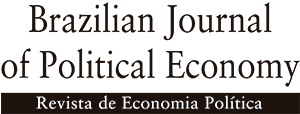Resumo em Português:
RESUMO Este ensaio é sobre a atual crise das instituições, estruturas e políticas que possibilitaram o notável crescimento da economia capitalista mundial por mais de três décadas após a Segunda Guerra Mundial. Aborda o enfraquecimento do dólar, a instabilidade do sistema financeiro internacional, o endividamento extremo de países, empresas e governos e a deterioração de instituições como o FMI e o GATT. Sustentamos que a situação atual também envolve uma crise dos mecanismos gerais de regulação capitalista, ou seja, a lei do valor e seus pseudo-substitutos, como a intervenção estatal e a administração oligopolista. Em suma, argumentamos que a crise que o capitalismo enfrenta na atualidade é geral - econômica, política e institucional - e que resulta dos mesmos mecanismos que estimularam o rápido crescimento nas décadas anteriores. Nesse sentido, o imbróglio atual é uma espécie de resposta “autoimune”, ou seja, decorre do bloqueio da ação higienizadora da “destruição criativa” de Schumpeter.
Resumo em Inglês:
ABSTRACT This essay is about the present crisis of the institutions, structures, and policies that made possible the remarkable growth of the capitalist world economy for more than three decades following World War II. It deals with the weakening of the dollar, instability of the international financial system, extreme indebtedness of countries, firms and governments, and deterioration of institutions like the IMF and GATT. We maintain that the present predicament also involves a crisis of the general mechanisms of capitalist regulation, i.e. the law of value and its pseudo-substitutes, such as state intervention and oligopolistic administration. In sum, we argue that the crisis that capitalism faces at the present time is general - economic, political, and institutional - and that it results from the same mechanisms which stimulated rapid growth in previous decades. In this sense, the present imbroglio is a kind of “auto-immune” response, or in other words, it is due to blockage of the sanitizing action of Schumpeter’s “creative destruction”.
